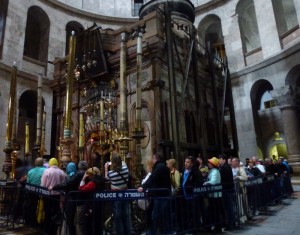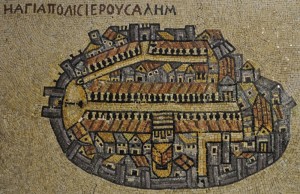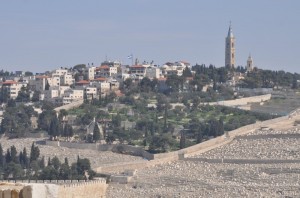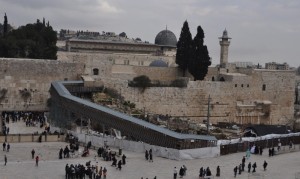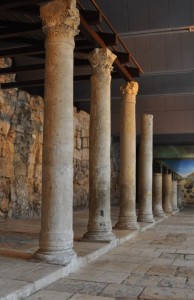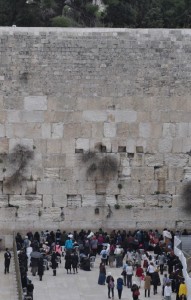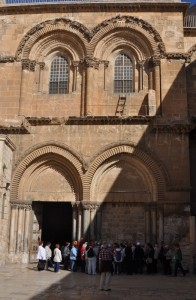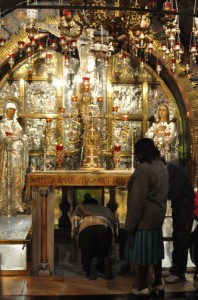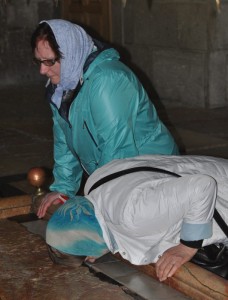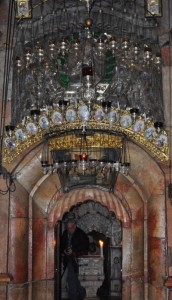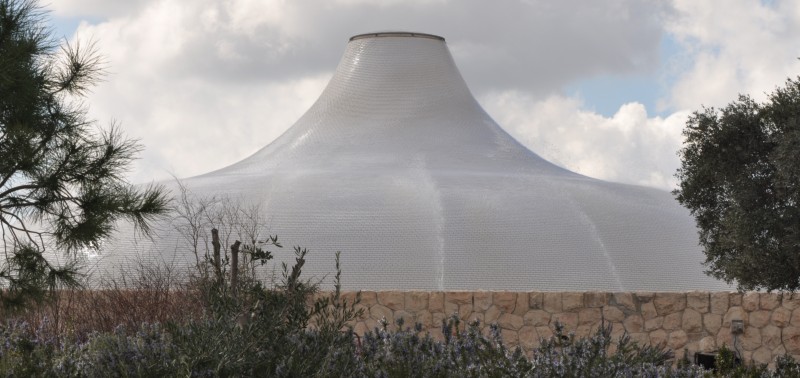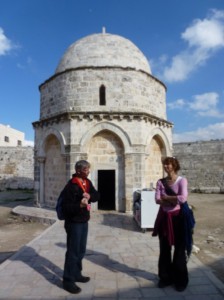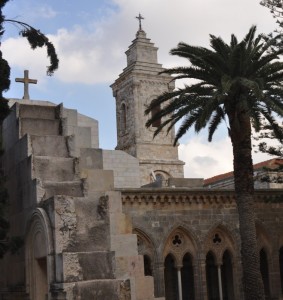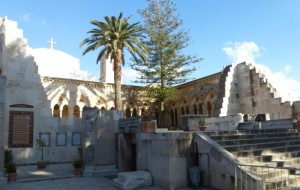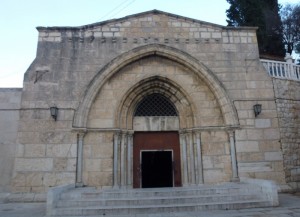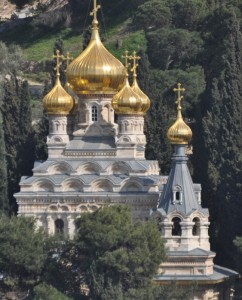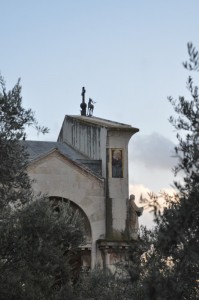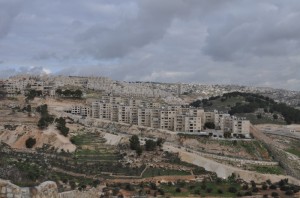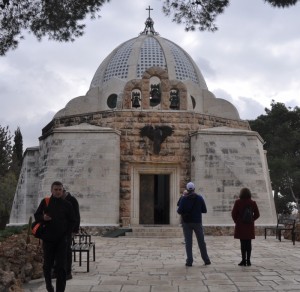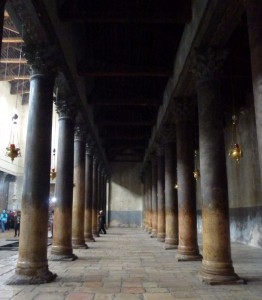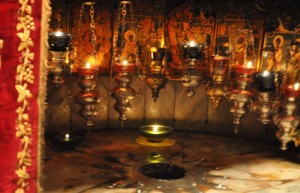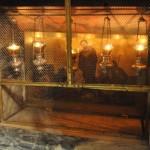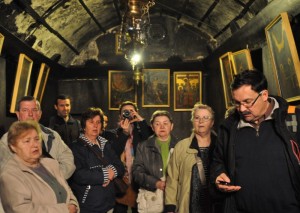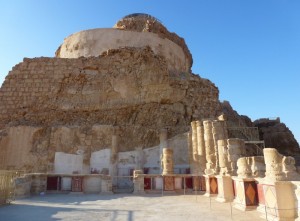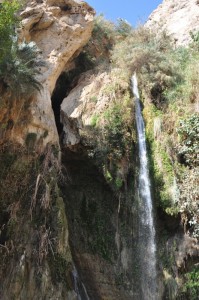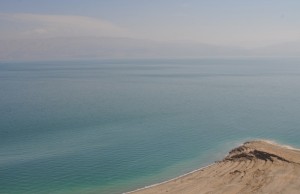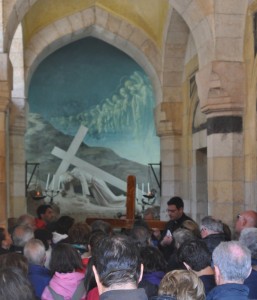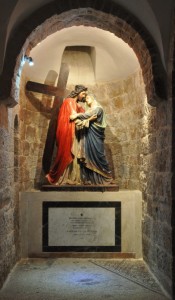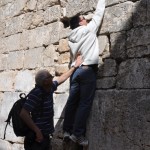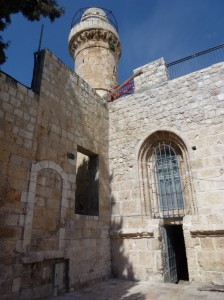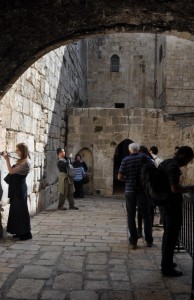Israel: Jerusalem February 17 – 22
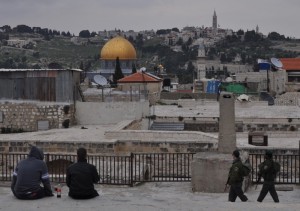 |
Jerusalem one of the oldest cities in the world is a holy place of three major Abrahamic religions – Judaism, Christianity and Islam. According to the Hebrew Bible, King David of Israel first established it as a capital of the united Kingdom of Israel in c. 1000 BC and his son, King Solomon commissioned the building of the First Temple on Mount Moriah (the sacred rock), the spiritual centre of the Jewish people. The Ark of the Covenant was placed inside the Temple. According to the New Testament, Jesus was crucified in Jerusalem possibly in 33 AD and 300 years later, St Helena, mother of the Byzantine Emperor Constantine identified the pilgrimage sites of Jesus’ life. In Sunni Islam, Jerusalem is the third holiest city after Mecca and Medina. In Islamic tradition in 610 it became the first Qibla, the focal point for Muslim prayer and Muhammad made his Night Journey there in 620. Hence, the Temple Mount and its Western Wall are holy for the Jews, the Church of the Holy Sepulchre for the Christians and the Dome of the Rock and al-Aqsa Mosque for the Muslims.
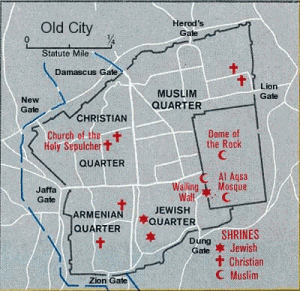 |
During its long history, Jerusalem has been destroyed twice (by the Babylonians and the Romans) and besieged 23 times. The oldest part of the city was settled in the 4th millennium BC. The city wall which defines the Old City with four quarters (the Armenian, Christian, Jewish and Muslim Quarters) was built by Ottoman Sultan Suleiman the Magnificent in 1538. The Old City is a World Heritage Site.
Today, Jerusalem has a population of about 800000. The status of city has been one of the thorny issues in the Israeli-Palestinian conflict. Israel’s Basic Law stipulates that Jerusalem is its “undivided capital”. Following the 1948 Arab-Israeli War, Israel annexed West Jerusalem while East Jerusalem was captured by Jordan. East Jerusalem was annexed by Israel after the 1967 Six-Day War. The international community has rejected the latter annexation as illegal and UN General Assembly resolution 58/292 of May 6, 2004 affirmed that the Palestinian people have the right to sovereignty over East Jerusalem.
February 17 Sunday: Tel Aviv – Jerusalem
Jerusalem is only 60 km from Tel Aviv. I took the 10:30am bus from a bus transit centre near Nilly’s house and arrived in the holy city 45 minutes later. I stayed in the Abraham Hostel on Jaffe Street close to the Old City. As there is so much history about Jerusalem, I decided to book four tours. To start off, I joined a free two-hour walking tour in the Old City in the afternoon.
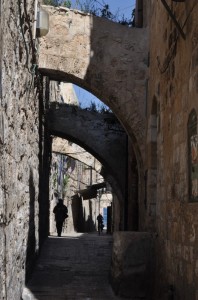 |
Alan, our guide was educated in Britain before returning to Israel some 30 years ago. The free tour had some 30 visitors from all nationalities. We started at the Jaffa Gate, one of the nine gates, zipped through the Armenian Quarter and reached a large roof-top area linking the four quarters. I had my first view of the Dome of the Rock and Mount of Olives. We stopped in the Cardo (market) where Alan explained the layout of the city as illustrated in the Madaba Mosaic Map (6th century) which remains basically the same for centuries since the Byzantine times. We walked through the Jewish Quarter and stopped at another vantage point to view the Western Wall (Wailing Wall) which is the holiest place in the world for Jews. After passing through the Muslim Quarter, we reached the Church of Holy Sepulchre built by St Helena in 314 in the Christian Quarter. Alan said that Jerusalem is the only place in the world where Christians from all denominations live together and this co-operation is symbolized in the “unmovable ladder” in a balcony above the entrance to the church.
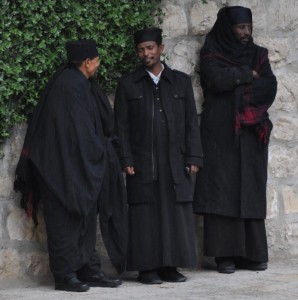 |
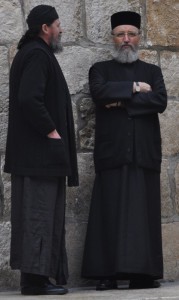 |
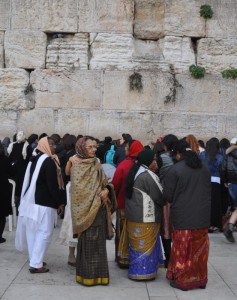 |
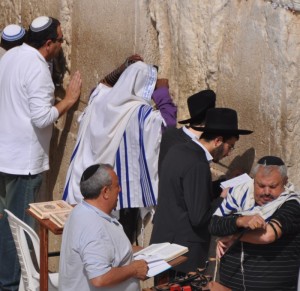 |
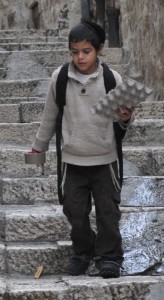 |
After the guided tour, I returned to the Church of Holy Sepulchre which atmosphere I find bewildering. It is difficult for me to describe my feeling while observing what’s going on in the church. Pilgrims were lining up to kiss the Rock of Calvery where Jesus was crucified and the Stone of Unction which commemorates the preparation of Jesus’ body for burial. A long queue of people were lining up to enter the Rotunda (Anastasis) where the Tomb of Christ i.e. Stations 12 -14 of the Way of the Cross. As various denominations have their chapels in the church, I watched two rituals going on at the same time. A procession of priests in white robe passed and went into the Franciscan chapel. A few minutes later, Orthodox clergymen were performing the daily liturgy. I went to the Western Wall afterwards and was once again overwhelmed by the expressions of the Jewish worshippers.
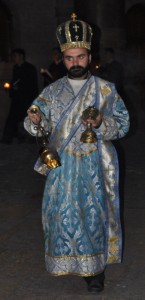 |
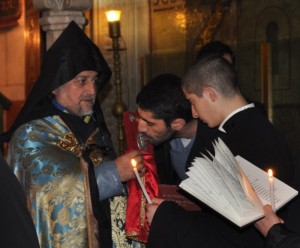 |
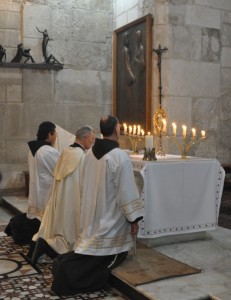 |
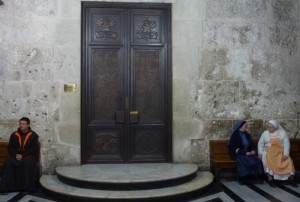 |
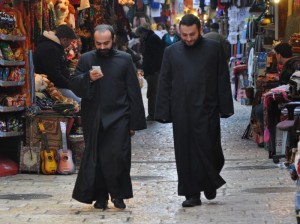 |
February 18 Monday: Israel Museum & Mount of Olives
Israel Museum, in my view, is one of the best museums in the world. The museum has the most extensive holding of biblical and Holy Land archaeology in the world. Its collections and presentation are first-rate. The Shrine of the Book which tells the story of the Dead Sea Scrolls is wonderful with excellent captions. I learnt something about the discovery of the scrolls during my trip to Jordan a few years ago. But what is on displayed here is amazing. The model of Jerusalem in the Second Temple Period (when Jerusalem was at its peak) before its destruction by the Romans gives an idea to what an impressive city it was almost 2000 years ago.
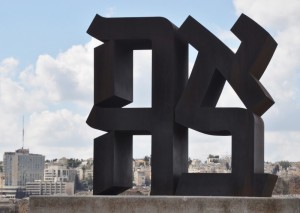 |
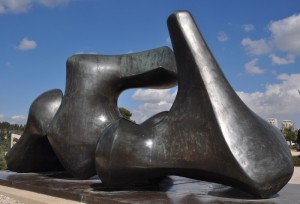 |
The special exhibition on King Herod (73 – 4 BC) is excellent and has prepared me for my visit to Masada. I learn something about the history of the Jewish people and his role in history. During his reign (34-4 BC), he had built the Second Temple, the fortress in Masada, the city in Caesarea, the palace and fortress in Herodium.
The museum has a section on the religion and secular culture of the Jewish people. I am impressed by the installation of four old synagogues from Germany, Italy, India and Suriname. The collection of modern art and paintings, masks and wood carving from Africa is impressive. Works of world class sculptors are found in the lovely art garden designed by Isamu Noguchi. I spent three hours there but had hardly seen a third of the exhibits.
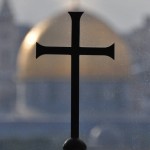 |
In the afternoon, I joined a walking tour to Mount of Olives for 90 shekels. Alice from Canada and I were the only two persons who signed up for this tour. I was delighted to see Alan as our guide. He took us to see five main sites and explained that according to Jewish tradition, the Divine Presence left the Temple and turned eastward towards Mount of Olives ridge, thus announcing the Temple’s destruction. The oldest Jewish cemetery in the world is located on the mountainside. All three monotheistic religions believe that the Messiah will come from the Mount of Olives and enter Jerusalem via the Golden Gate.
We started the walking tour at the Tower of the Ascension, the spot where Jesus ascended to heaven. There is a huge footprint of Jesus. The present structure was built during the Ottoman period. The next stop was Church of Pater Noster standing on the ruins of the Byzantine Eleona Basilica which was built over a cave where according to tradition Jesus taught his disciplines the Lord’s Prayer. The site is now within the compound of a convent under the Carmelite Cloistered Sisters. The convent was first built in the 4th century, the Crusaders rebuilt part of the church and a new convent was built in the 19th century. Colourful tablets showing Lord’s Prayer in different languages decorate the walls.
The slope of Mount of Olives is fairly steep. We arrived at the Dominus Flevit Church which was built to commemorate Jesus’ sweeping over Jerusalem as he foresaw the destruction of the city. Standing on the ruins of a 7th-century church, the present church was built in 1955 and is at the same elevation as the Dome of the Rock.
We arrived at the Church of the Assumption near the Garden of Gethsemane at the foot of Mount of Olives. Underneath its main alter lies the Tomb of the Virgin Mary which is seen as the traditional site of the burial of Mary before her assumption into heaven. The first church is believed to be constructed in the 5th century and rebuilt in 1130. In the 14th century Franciscans rebuilt it and in 1757 the Greek Orthodox leaders took control of the access to the shrine.
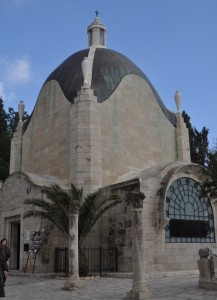 |
We passed the Church of Mary Magdalene built by Tsar Alexander III in 1888 in the traditional Russian style with seven golden domes. Princess Alice of Greece who harboured Jews during the Nazi occupation of Greece was buried here. The Church is closed most of the time.
Our last stop was the Church of all Nations, also known as the Church or Basilica of the Agony which enshrines a section of a bed-rock where Jesus is said to have swept and prayed before his arrest. A Byzantine chapel was first built on the site in the 4th century and destroyed by earthquake in 746. A small 12th century Crusader chapel was built and abandoned in 1345. The present church was built between 1919 and 1924 with donations from all nations.
Alice, Alan and I walked all the way back to the Jaffa Gate. Alan has given us an informative and excellent tour!
February 19 Tuesday: Bethlehem & Yad Vashem
I joined a tour to Bethlehem located in the Palestinian territory. The Hebrew Bible and the New Testament identifies Bethlehem as the city David was from and as the birthplace of Jesus respectively.
A group of nine people from the Abraham Hostel joined the tour (160 shekels each). We were taken by a minibus to Bethlehem and were met by a local guide. He first took us to the Shepherds’ Fields before arriving at the Basilica of Nativity the oldest standing church in the Holy Land. It was first built by St Helena in the 4th century and the current building was rebuilt by Emperor Justinian in 530s. There was a long queue of pilgrims waiting for their turns to kiss the spot where Jesus was purported to be born (which is marked by a star on the ground). We also visited the Franciscan St Catherine’s Church next to the Basilica. We also visited the Milk Grotto Chapel.
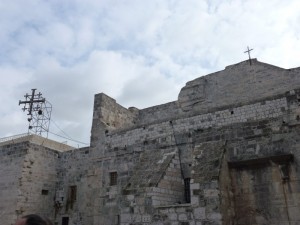 |
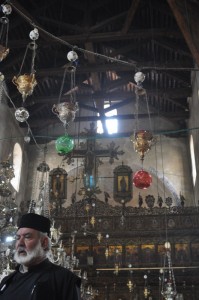 |
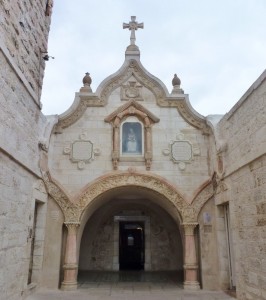 |
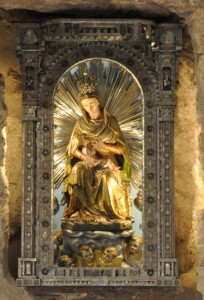 |
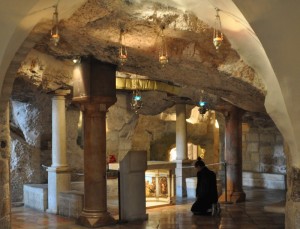 |
Christmas rites are held in Bethlehem on three different dates: December 25 by the Roman Catholic and Protestant denominations; January 6 by Greek, Coptic and Syrian Orthodox Christians and January 19 by Armenian Orthodox Christians.
We were back in the minibus at 11:30am. I was dissatisfied with the guide. His English is adequate but he did not know how to tell a story and give information. He’s not a leader and did not give us time to stroll in the old town. I wish I had done this trip on my own.
In the afternoon, I went to Yad Vashem (the world’s largest Holocaust museum) established by an act of the parliament to commemorate the six million Jews murdered by the Nazis and their collaborators. I have visited Holocaust museums in Berlin, Austria and Poland. But this museum is the best one giving a full picture of what had happened.
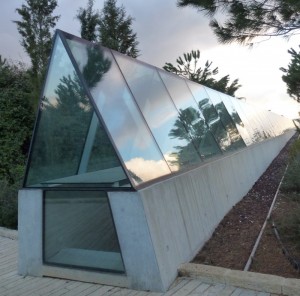 |
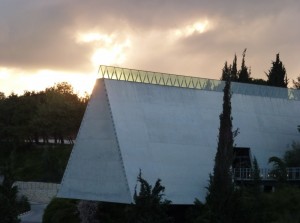 |
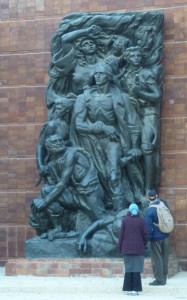 |
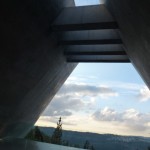 |
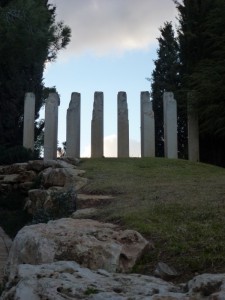 |
At the exit, I met Johnny who came from the same hostel. He works in a world-wide hotel group and was interested to see the famous King David Hotel. We made a trip after dinner to see the hotel and the YMCA Tower which was designed by the same architect of the Empire State Building. We are more impressed by the YMCA Tower and the famous hotel.
February 20 Wednesday: Excursion to Masada, En Gedi & Dead Sea
I got up at 3:30am and departed with eight young people from the Hostel to watch sunrise at Masada, a World Heritage Site. At 5:20am, we arrived at the foot of the mountain bloc measuring 450m above the level of Dead Sea, 650m long and 300 m wide.
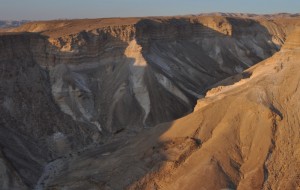 |
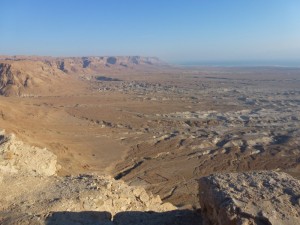 |
The first fortress was built by the Hasmonean king Alexander Janaeus (103-76 BC). King Herod expanded into a palatial fortress in the style of the ancient Roman East. The camps, fortifications, and assault ramp at its base constitute the most complete surviving ancient Roman siege system in the world. When the Great Revolt of the Jews against the Romans broke out in 66BC, rebels fled to Masada which became the last stronghold in Judea. In 73/74 BC, Romans laid siege to the mountain. Masada was therefore the last bastion of Jewish freedom fighters against the Romans. Its fall signaled the violent destruction of the Kingdom of Judea at the end of the Second Temple Period. The tragic events of the last days of the rebels when Eleazar Ben Yair, leader of the 960 members of the community convinced them to take their own lives and their families rather than living in shame and humiliation as Roman slaves transformed it into both a Jewish cultural icon and a symbol of humanity’s continuous struggle for freedom from oppression.
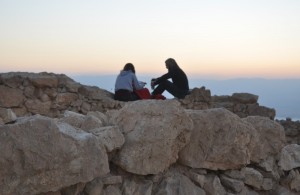 |
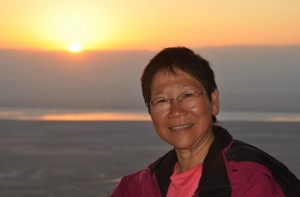 |
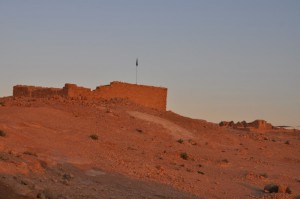 |
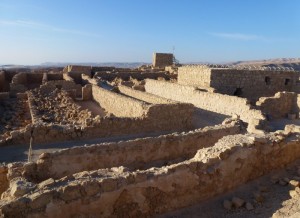 |
I followed the Snake path and reached the top at 6am without difficulties. I watched sunrise before strolling to see this expansive fortress. I am most impressed by the spectacular 30-m high Northern Palace built on three rock terraces and the water system. The Byzantine church, the synagogue, the bathhouse, the swimming pool, the immersion pool and ritual baths are also interesting. I had to rush back as the bus would be leaving at 8:20am.
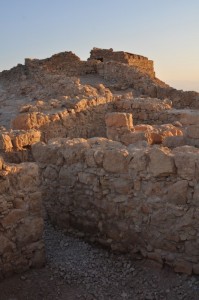 |
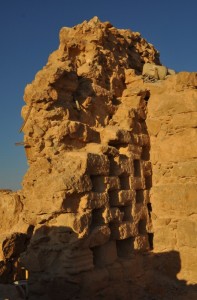 |
After a short ride of 20 minutes, we arrived in En Gedi located on the eastern edge of the Judean Desert on the shore of the Dead Sea. The earliest vestiges unearthed in En Gedi date back to the Chalcolithic era (approximately 5000 years ago). A permanent Jewish settlement existed around 7th century BC. It is also a nature reserve which covers some 3600 acres with four springs and nine walking trails of which the trail to Zeruya is the most challenging taking 7-9 hours. I saw a gedi (ibex) and several rock hyraxes.
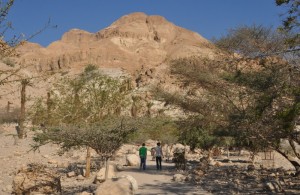 |
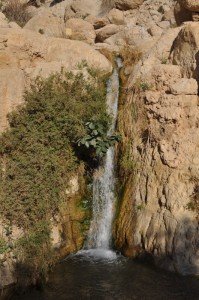 |
I took an easy one to David’s waterfall. As there was still plenty of time, I took the trail heading to Shulammit’s spring. But the slope becomes too steep for me especially as I do not have proper hiking shoes. I gave up the idea half way.
The last stop was the Dead Sea which water and mud are famous for their healing effects. Unfortunately, I developed some sort of skin allergy on my legs that morning and could not stay in the water for more than ten minutes. My skin was burning and I had to get out.
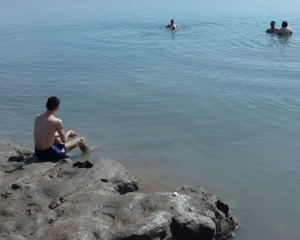 |
By the time I arrived in the hostel at 1:30pm, my skin was burning and I could hardly walk. But the pain was suddenly gone an hour later. I therefore set off at 3pm for the Northern Rampart Walk (16 shekels). Starting at the Jaffa Gate, I finished the walk at the Lions’ Gate an hour later passing through the New Gate, Damascus Gate and Herod’s Gate. I had no time to take the Southern Rampart Walk starting at the Jewish Quarter.
At 6pm I joined a most fascinating Western Tunnel Walk (30 shekels) which takes visitors to see the Western Wall below the surface. It is mind-blogging. Ongoing excavations have brought to light the lower parts of the wall which goes some 10m below the surface. The ancient masonry is excellent. What I have seen in the 2000-year old tunnel is awesome and unbelievable. I highly recommend this walk to visitors to the Holy City.
February 21 Thursday: Jerusalem – Tel Aviv
I went to the Church of Holy Sepulchre spending an hour people watching. I also joined the queue and entered the Chapel of Holy Sepulchre to see the Tomb of Christ. I visited the Lutheran Church of the Redeemer, the only Protestant Church in the Old City. I climbed some 170 steps to reach the top of the spire which affords a fantastic view of the Dome of the Rock and Mount of Olives.
I tried to locate Stations 1-7 of the Way of the Cross along Via Dolorosa. At 11:30am, I joined a guided tour for 85 shekels to get a better understanding of the Old City. The tour lasted four hours and I heard the stories on Mount Zion, Room of the Last Super which is directly above the Tomb of David and the Dormition Abbey built in late 19th century by the Germans to commemorate the eternal sleep of the Virgin Mary. According to Christian belief, Mary did not die; she sank into eternal sleep. We lined up for some 30 minutes in order to go into the compound where the Dome of the Rock and Al Aqsa Mosque are located. The Dome the oldest Islamic monument is one of the world’s most recognizable and iconic buildings. Only Muslims are allowed inside the shrine. We stayed in the compound for almost an hour. I find the atmosphere relaxing with Muslims sitting under the tree or in the shade chatting and praying. Some young boys were playing football. The guide took us to the small Wailing Wall which is the closest point to the sacred rock.
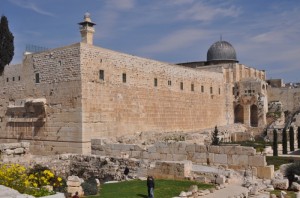 |
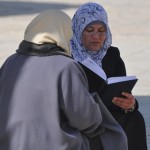 |
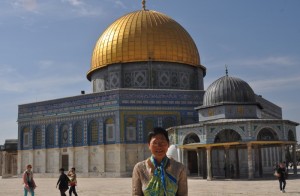 |
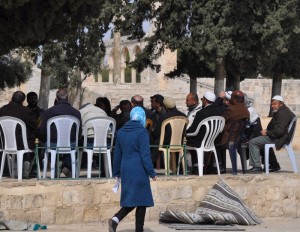 |
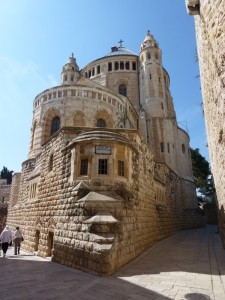 |
After lunch, I returned to the Church of Holy Sepulchre for the fourth time. With the guide’s explanations, things happening inside the church began to make sense. I took the 4:20pm bus back to Tel Aviv and spent a relaxing and lovely evening with Nilly and Rani.


